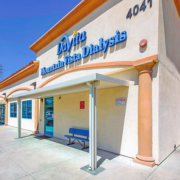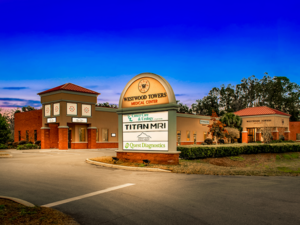Healthcare Real Estate Investment: Is it Right for You?
Healthcare real estate has been a growing asset over the last several years and it will continue to be a good place to invest based on expert opinion. Healthcare real estate assets include hospitals, medical centers, nursing facilities, and retirement homes.
Why Invest in Healthcare Real Estate?
Healthcare is one of the most interesting spaces for private equity real estate investors. The success of this real estate is directly tied to the healthcare system. If you’re looking for a solid real estate investment, it pays to look at healthcare REITs or real estate investment trusts.
Benefits
Healthcare REITs benefit from the massive and growing healthcare industry, one of the largest stock market sectors. While healthcare spending in the U.S. peaked at $3.8 trillion in 2019, it declined by 2% in 2020 due to the COVID-19 pandemic. However, it started growing again in 2021 and is on track to top $6 trillion by 2028.
Forecasts suggest the demand for healthcare-related real estate will continue growing. REITs are likely to benefit from steadily rising rental rates on existing properties. In addition, they should be able to develop new properties to meet the growing needs of the healthcare industry.
One of the drivers of the sector’s projected growth is the aging of the baby boom generation. The population of individuals over the age of 80 years old is expected to be one of the fastest-growing age groups through 2029. The increase in the ranks of the elderlyis predicted to drive demand for senior housing and skilled nursing facilities. Such growth is likely to benefit healthcare REITs focused on those properties as they report higher occupancy levels, allowing them to raise their rates.
Risks
While healthcare REITs are less risky than other healthcare investments because of their generally stable rental income, they’re not without risk.
- Leverage risk: REITs borrow heavily to acquire and develop real estate. The debt reduces their financial flexibility during economic recessions.
- Interest rate risk: REITs are highly sensitive to changes in interest rates. Higher rates increase their cost of debt, given the sector’s use of leverage. In addition, higher interest rates give income-focused investors more investment options that offer an attractive income yield, such as government and corporate bonds, which can weigh on REIT stock prices.
- Oversupply risk: Healthcare REITs need to match their development plans with demand. Given the highly specialized nature of most healthcare facilities, REITs need to be careful not to build too much supply or it is likely that it will sit vacant.
- Tenant risk: Healthcare REITs rely on their tenants to pay rent and manage senior living facilities effectively. However, healthcare margins are relatively thin, which can cause operators to run into financial trouble if they’re not vigilant. That can affect rental receipts and force a healthcare REIT to find a new tenant for their facility if an operator can’t meet its financial obligations.
- Pandemic/flu season risk: Virus outbreaks can significantly affect healthcare REITs, especially those focused on senior housing. This can cause occupancy to decline as more patients check out than are admitted.
How to Invest in Healthcare Real Estate
Healthcare REITs
Healthcare REITs own, operate, manage, acquire, and develop healthcare-related real estate. These facilities include senior living communities, hospitals, medical offices, outpatient facilities, life science innovation and research properties, and skilled nursing facilities. Medical commercial real estate is often called MedTail, short for medical retail.
Most healthcare REITs make money by leasing space in their facilities to tenants such as healthcare systems, primarily under triple net leases. This lease structure requires the tenant to cover maintenance, real estate taxes, and building insurance. The structure provides REITS with a very predictable stream of rental income, making them ideal stocks to invest in during a recession.
Some healthcare REITs also operate the facilities they own, such as senior living communities. They typically hire a third-party manager who earns a fee for managing the property’s day-to-day operations. The healthcare REIT generates net operating income from the fees paid on behalf of patients for their housing and any services provided. The income can vary due to fluctuations in occupancy levels and rates.
Consult a SIG Advisor
If you’re interested in healthcare real estate investment, get in touch with a SIG advisor. Our experts can help you find the right healthcare property for your portfolio. SIG is home to experienced brokers that are designated experts in all areas of CRE, including healthcare real estate.
Want to learn more? Call 844.4.SIG.NNN or contact us here to consult with a SIG advisor about growing your commercial real estate portfolio.

















